Cottage Cheese Pumpkin Protein Muffins
When I set out to create these pumpkin protein muffins, I was inspired by the popular pumpkin and cream cheese flavor combo that’s a fall favorite. However, I wanted to craft a healthier version while keeping that creamy texture. So, I chose to substitute cream cheese with 2% cottage cheese. Cottage cheese offers a deliciously rich flavor, but it’s also packed with nutritional benefits. These muffins each have a whopping 10 grams of protein!
Cottage cheese is high in protein, which helps keep you full longer, and it’s much lower in fat than cream cheese. While cream cheese provides a smooth texture, it also tends to be higher in calories and saturated fat. Cottage cheese, on the other hand, offers a leaner alternative that doesn’t skimp on flavor or creaminess. It adds a nutritional boost with its calcium and essential nutrients like vitamin B12, making these muffins a satisfying and wholesome snack or breakfast option.
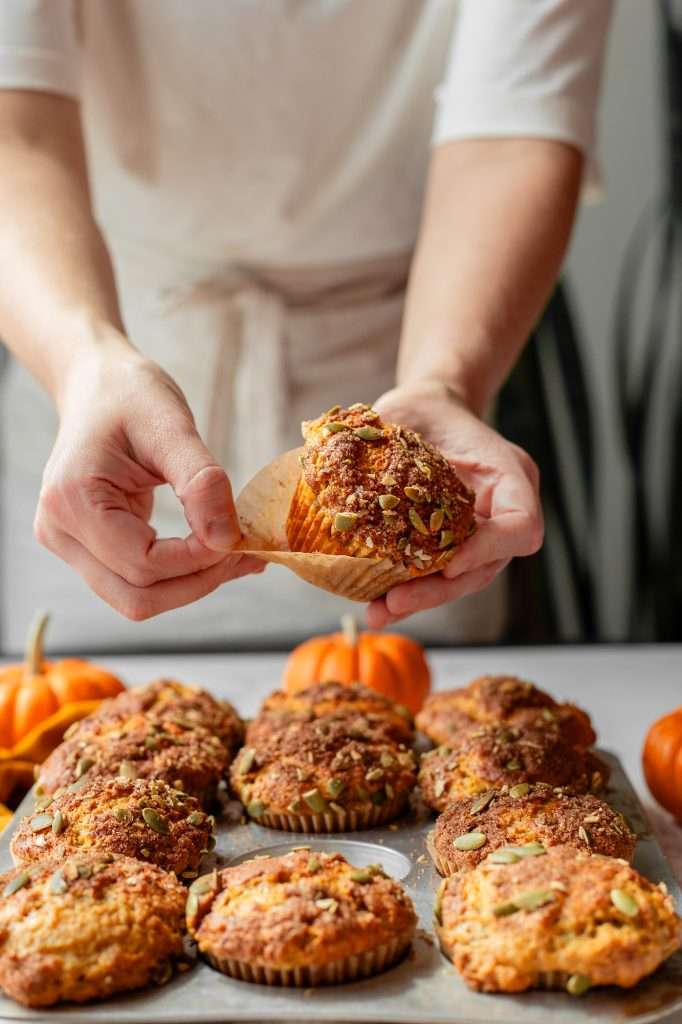
That’s where my love for sourdough discard muffins comes in. They’re already a staple snack around here, but I knew I could take them to the next level with a pumpkin protein version. By blending in sourdough discard, grass-fed whey protein, creamy cottage cheese, and pumpkin puree, I’ve crafted a muffin that’s not only delicious but also delivers the fuel we need to keep our energy up. It’s the perfect balance of seasonal flavors and gym-friendly nutrition!
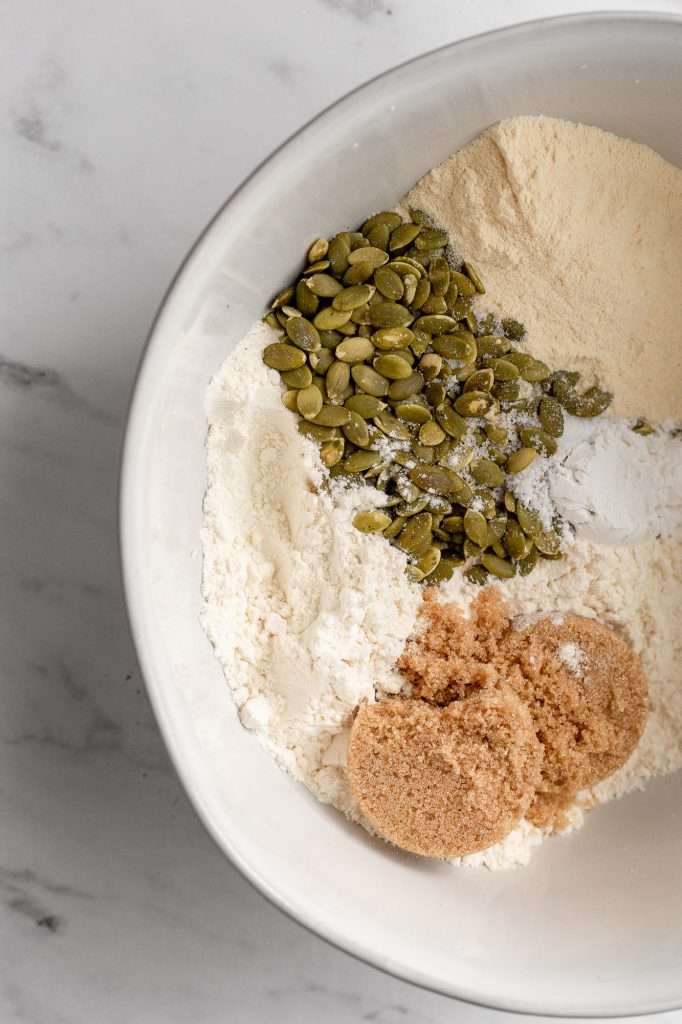
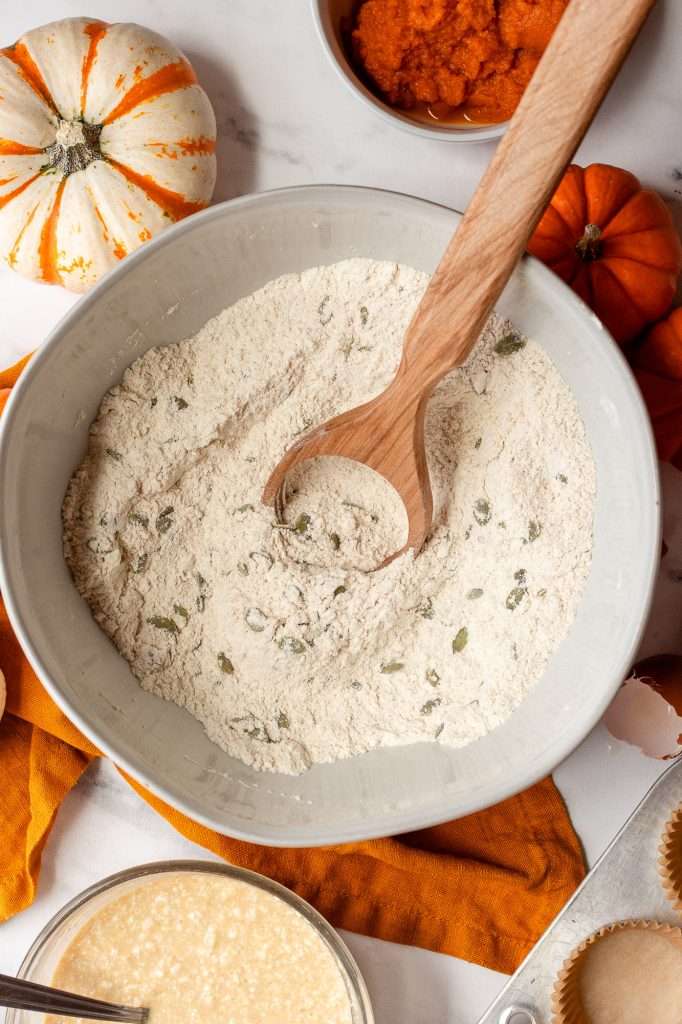
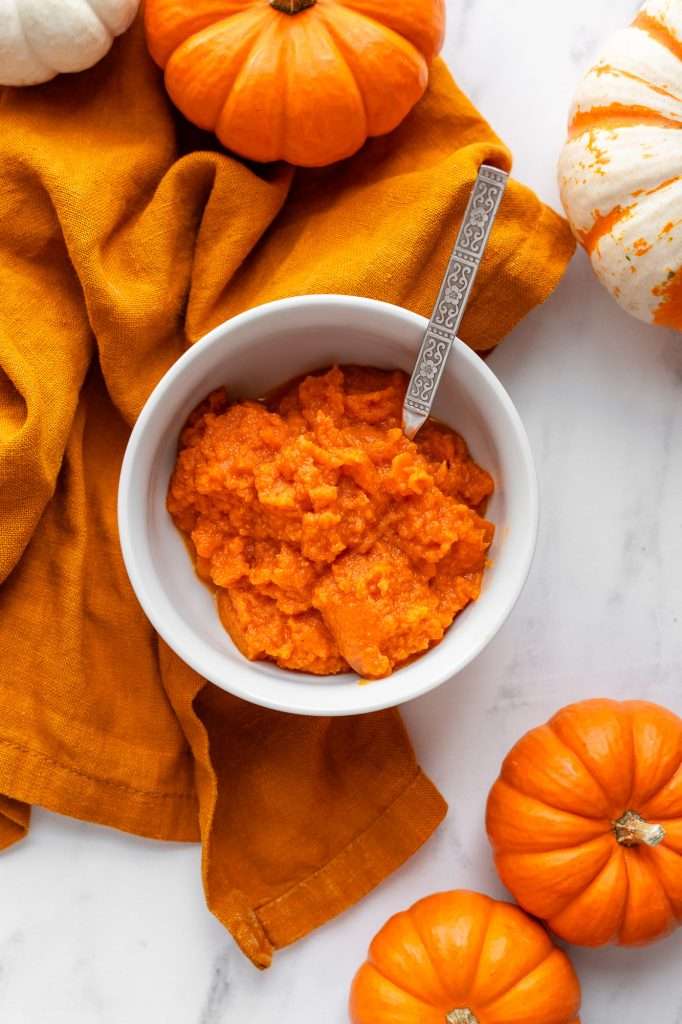
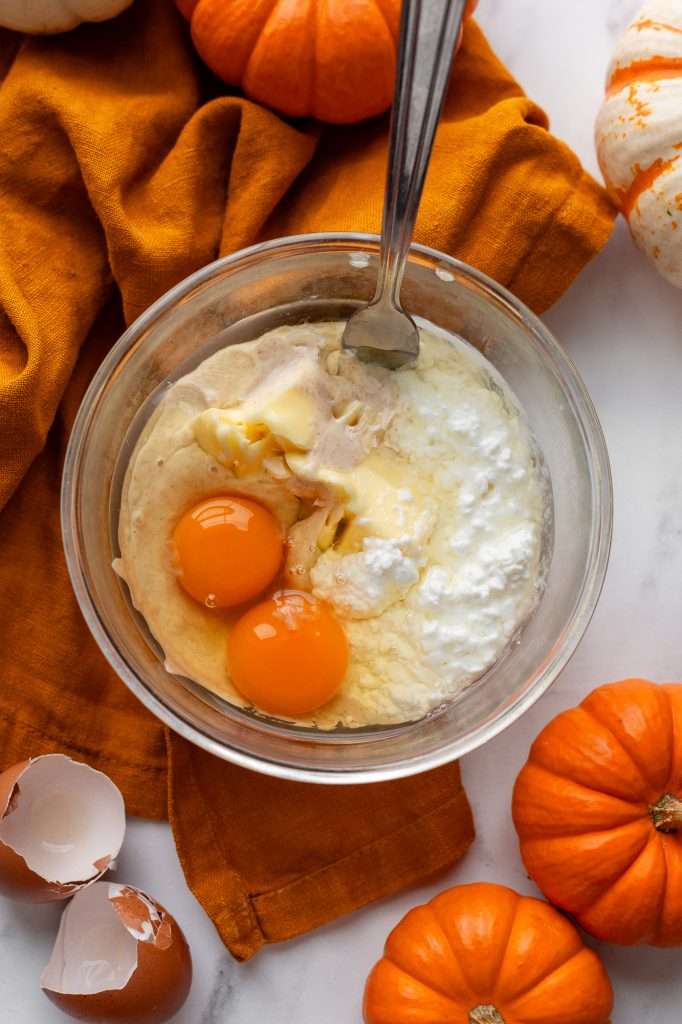
Using Sourdough Discard in Muffins
The fermentation process used to create sourdough bread enhances its nutritional profile. Sourdough is easier to digest than traditional yeast bread. In sourdough, lactic acid bacteria break down gluten, fructans, and phytic acid. This can be particularly beneficial for individuals with gluten or FODMAP sensitivities.
Muffins are not usually long-fermented, but they can be! I don’t long ferment these pumpkin protein muffins, but many readers have told me they have successfully fermented the batter overnight in the fridge for easier digestion. You can try fermenting the muffin batter overnight in the refrigerator before preheating your oven and filling your muffin tin with batter.
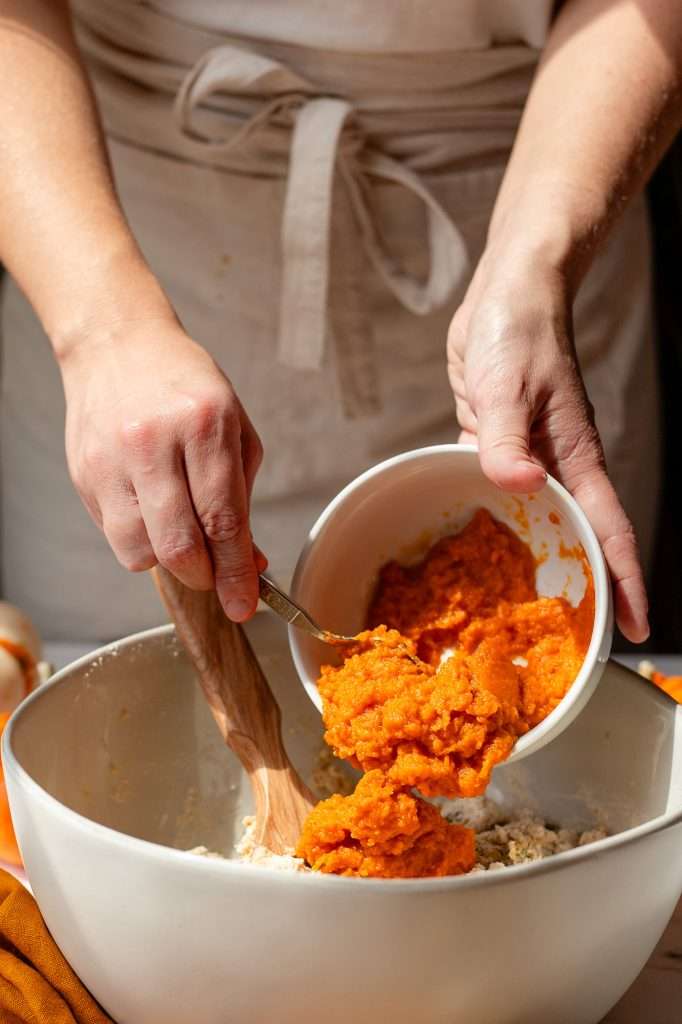
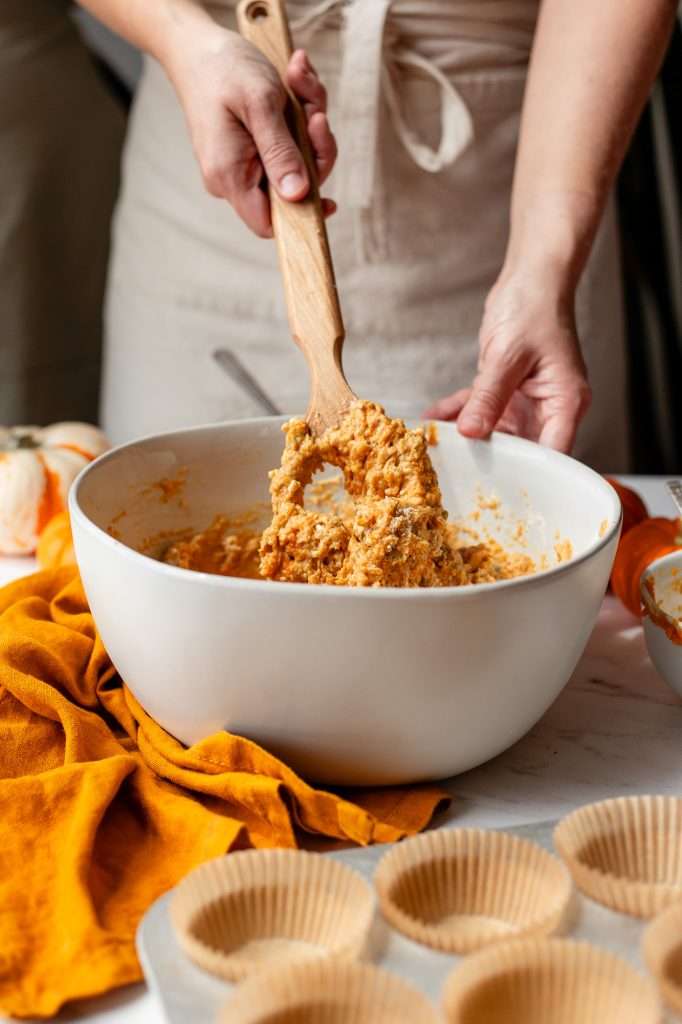
Don’t Over-Mix These Pumpkin Protein Muffins
One crucial tip when making these pumpkin protein muffins is to avoid overmixing the batter. Overmixing can result in dense muffins rather than light and fluffy protein muffins, and the reason behind this is the formation of gluten.
Gluten, a protein present in flour, gives structure to baked goods. However, excessive mixing develops gluten strands, leading to a denser texture. To prevent this, gently mix the dry and wet ingredients until they are just combined, ensuring there are still some lumps and streaks of flour in the batter.
This technique allows the muffins to rise correctly, resulting in a tender crumb.
My other muffin baking tip is always to use a thin metal aluminum muffin tin with paper liners. A metal muffin tin works way better than a silicone muffin pan.

Why Are My Pumpkin Protein Muffins Dry?
Dry protein muffins can result from several factors related to ingredients and baking techniques. Here are some common reasons and tips to help you troubleshoot:
- Too Much Flour: Adding too much flour can make muffins dry. For accuracy, measure your flour correctly using the spoon-and-level method. (Spoon the flour into the measuring cup, don’t just scoop it)
- Overmixing: Overmixing the batter can cause too much gluten to develop, making the muffins dense and dry. Mix until just combined to avoid this.
- Baking Time: Baking muffins for too long can cause them to dry out. Check them a few minutes before the recipe’s suggested time by inserting a toothpick; it should come out clean but not dry.
- Protein Powder Type: Different protein powders absorb moisture differently. Whey protein, for example, can sometimes make baked goods dry. The pumpkins used in this recipe add enough moisture to keep the muffins moist, even with protein powder.
- Low-Fat Content: If you use low-fat ingredients or substitutes, the muffins may lack moisture. My recipe calls for grass-fed butter and cottage cheese, which helps keep the muffins from drying out.

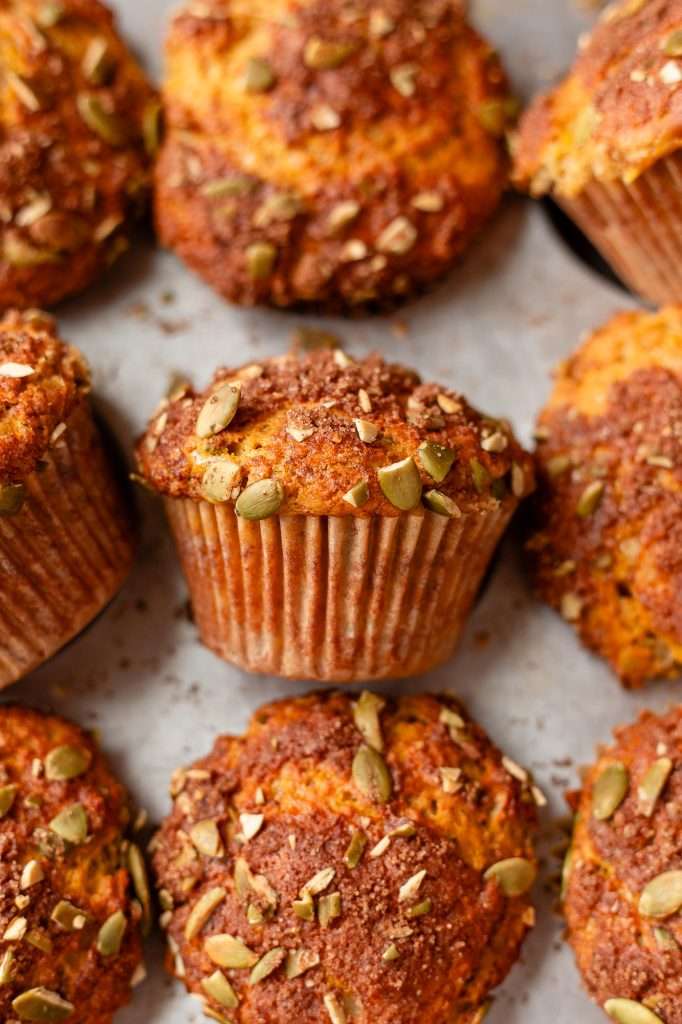
Storing Pumpkin Protein Muffins
Storing baked sourdough pumpkin protein muffins properly ensures they remain fresh and delicious. Here are some tips on how to store them effectively:
- Room Temperature Storage:
- Allow muffins to cool completely.
- Place them in an airtight container lined with paper towels to absorb excess moisture.
- Store at room temperature for up to 3-4 days.
- Refrigeration:
- If the weather is hot or humid, consider refrigerating muffins.
- Store in an airtight container in the fridge for up to one week.
- Freezing Muffins:
- Cool muffins completely before freezing.
- Place muffins in a freezer-safe bag or container.
- Label it with the date and freeze it for up to 3 months.
- Reheating Frozen Muffins:
- Remove the desired number of muffins from the freezer.
- Microwave on high for 20-30 seconds or until warm.
- Alternatively, preheat the oven to 350°F (175°C) and heat muffins for 10-15 minutes until warmed.
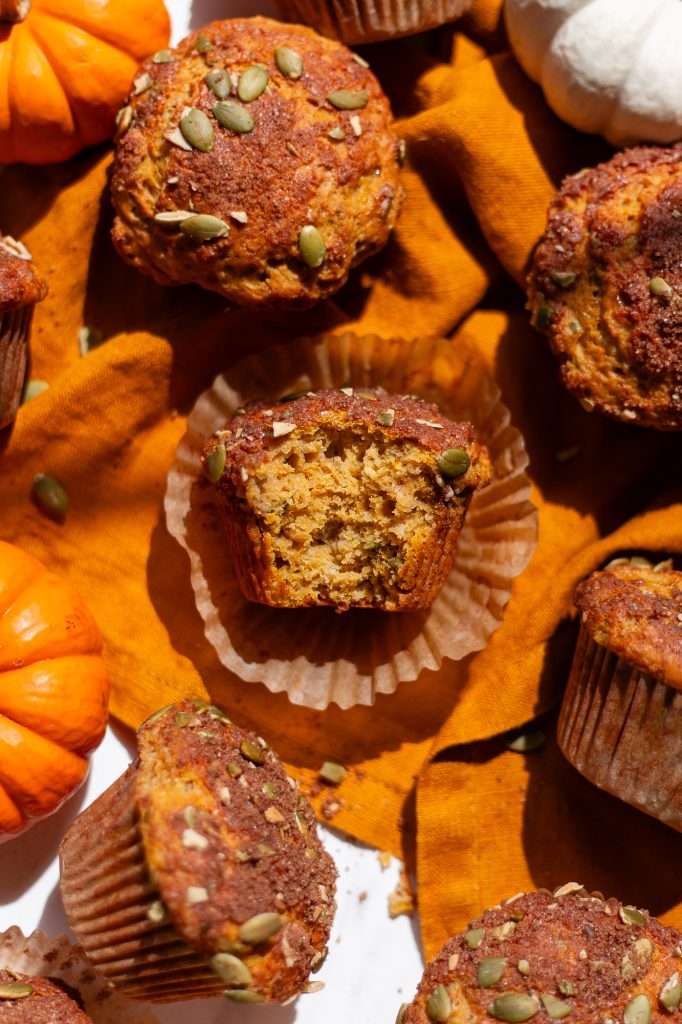
More High-Protein Recipes to Try
- Cottage Cheese Ice Cream with Brown Butter and Vanilla
- Chocolate Chip Cottage Cheese Cookie Dough Bites
- Low-Sugar Blueberry Protein Muffins with Sourdough Discard
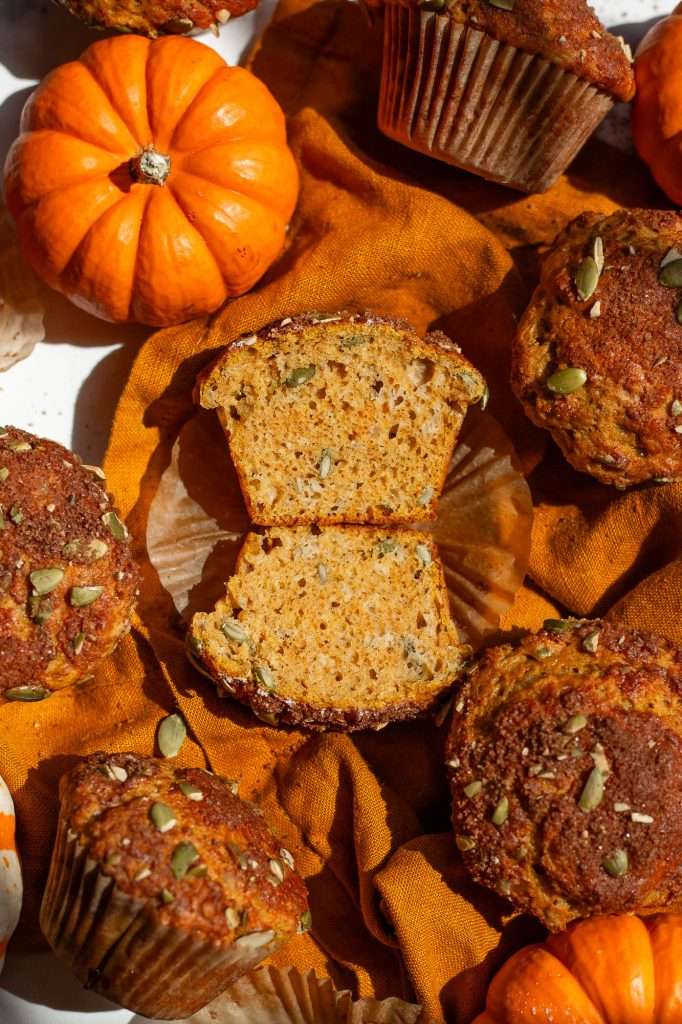

Cottage Cheese Pumpkin Protein Muffins with Sourdough Discard
Sourdough muffins are already a staple snack around here, but I knew I could take them to the next level with a pumpkin protein version. These cottage cheese pumpkin protein muffins have 10 grams of protein each and include sourdough discard, grass-fed whey protein, creamy cottage cheese, and pumpkin puree for the best flavor and nutrition.
- Prep: 10 minutes
- Cook: 30 minutes
- Total Time: 40 minutes
Ingredients
- 1 3/4 cups all-purpose flour
- 3/4 cup plain whey protein powder*
- 1/2 cup brown sugar, packed
- 1/2 teaspoon baking soda
- 1 teaspoon baking powder
- 1 teaspoon salt
- 1/2 cup pumpkin seeds
- 1/2 tsp cinnamon
- 1/4 cup grass-fed butter, room temperature soft
- 1/3 cup sourdough starter, room temperature
- 1/3 cup cottage cheese*
- 2 eggs, room temperature
- 2 teaspoons vanilla extract
- 1 cup pumpkin puree
Instructions
- Preheat your oven to 350° F.
- Line a muffin tin with paper liners.
- Measure out the pumpkin puree and set aside.
- In a medium-large mixing bowl, combine the flour, protein powder, sugar, baking soda, baking powder, salt, cinnamon and pumpkin seeds.
- In a separate bowl, combine the butter, sourdough starter, vanilla, cottage cheese, and two eggs. Whisk until combined.
- Gently fold together the wet ingredients, the dry ingredients, and the pumpkin puree until everything is just combined. The pumpkin will look kind of swirled in. Do not over-mix. The batter should be thick, and it’s okay if there are clumps.
- Spoon the batter into the muffin tins. Optional— top with cinnamon, brown sugar, and more pumpkin seeds.
- Bake for about 30 minutes total. Rotate the pan halfway through.
- Allow cooling for about 15 minutes.
Notes
- Use full-fat cottage cheese for more moist muffins. Low-fat cottage cheese will give slightly drier muffins, but still great.
- If you do not have protein powder, you can still make these muffins!— Use 2 cups of flour total in the recipe, and omit the protein powder.


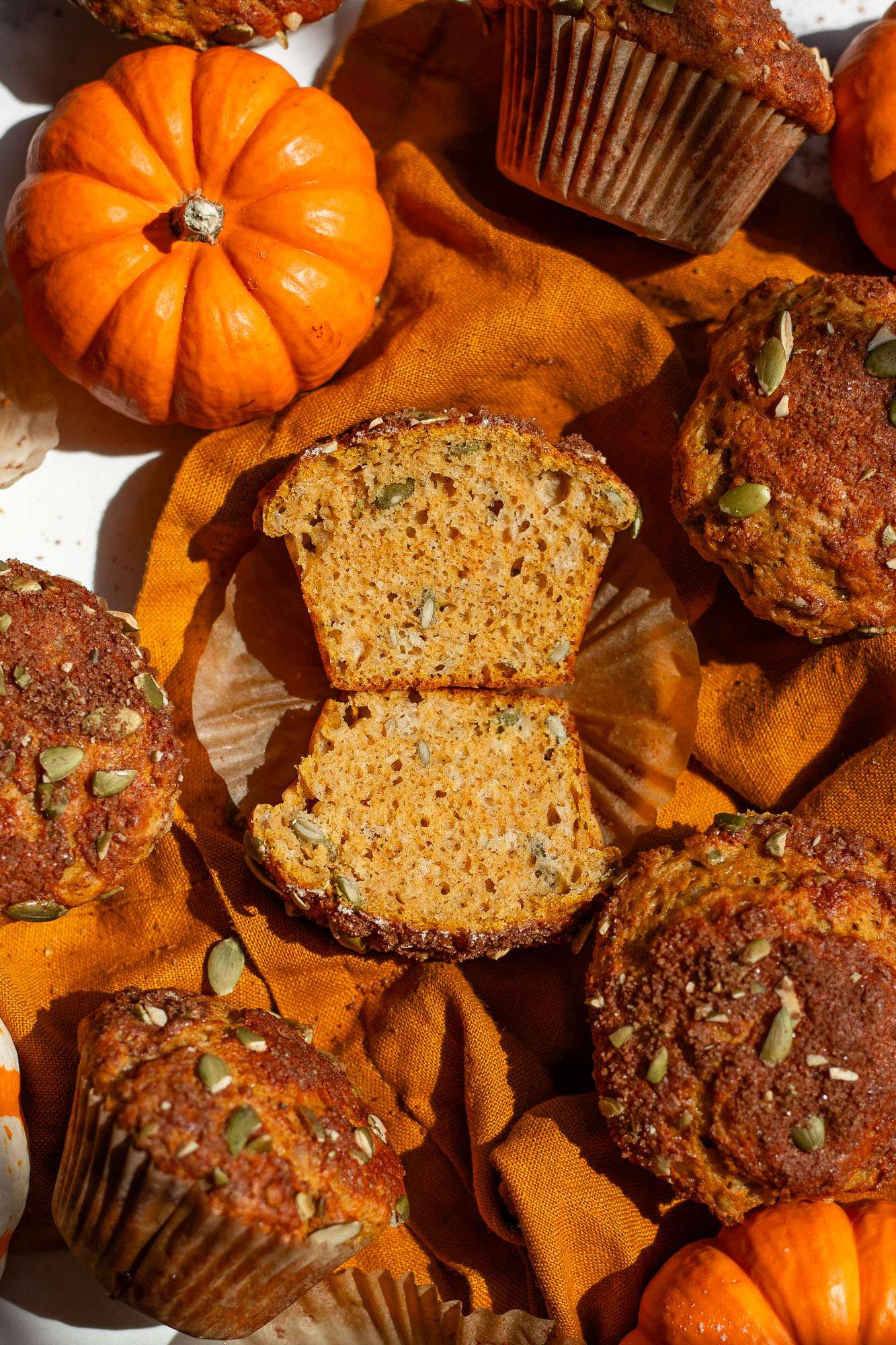












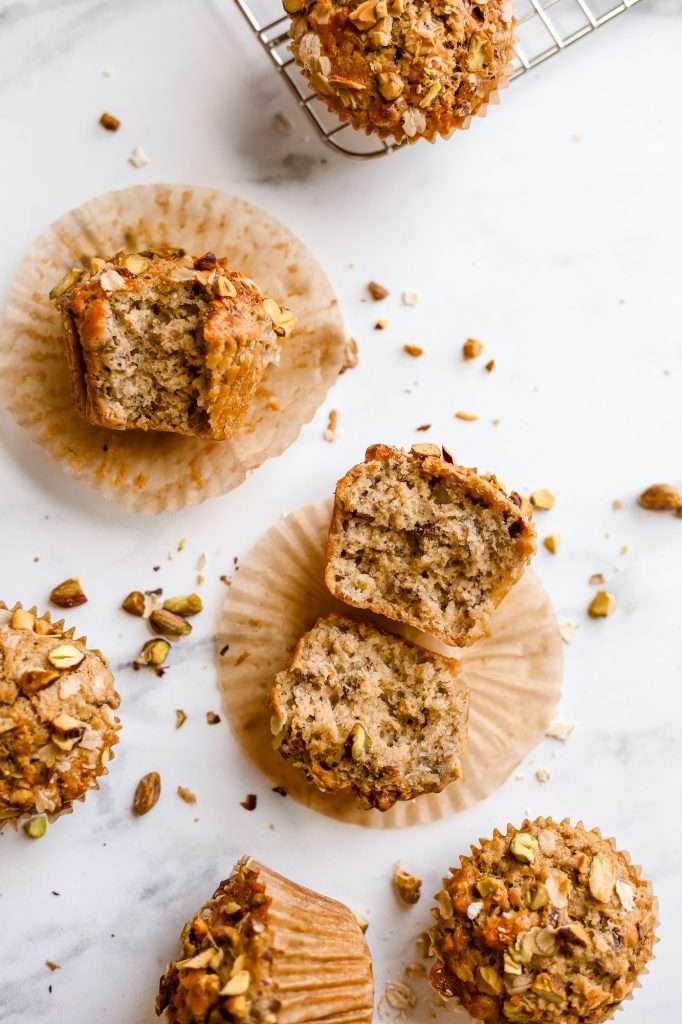

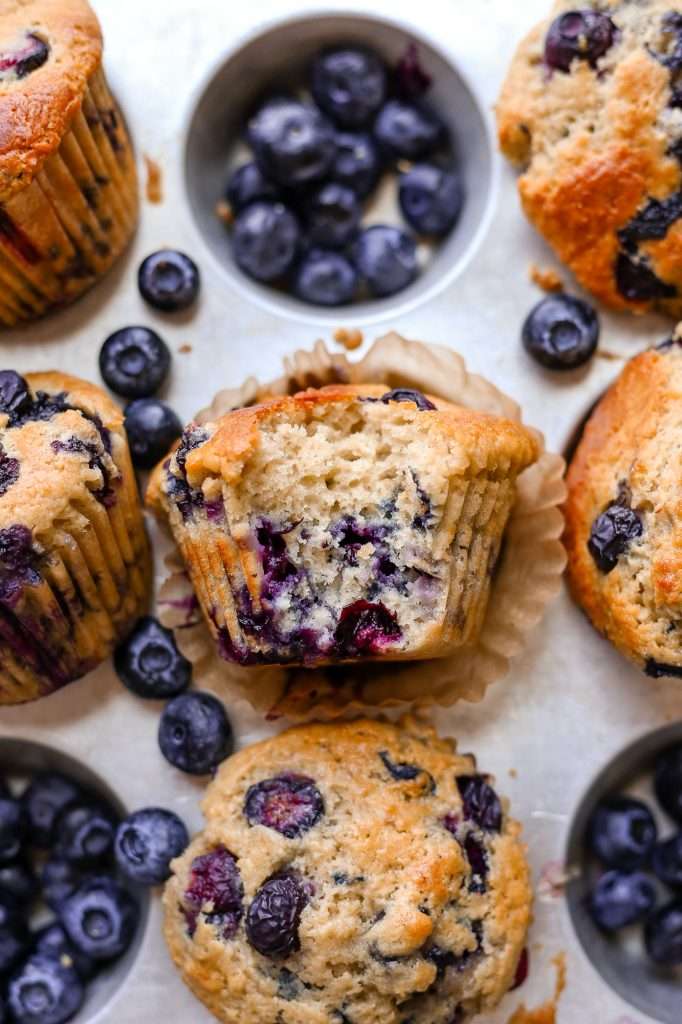

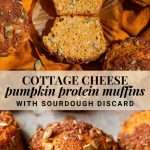
Hi what if I am allergic to whey protein? What else can I substitute it for? Can I just not put any protein powder at all? Thanks in advance
hey! Check the recipe notes for directions on leaving the protein powder out.
I made a few changes to it for my needs but it turned out perfect! I have a gluten free brown rice sourdough starter /discard and used 90g of its discard. I did 150g vegan protein powder (cinnamon roll flavor) and 1 cup buckwheat flour and 0.5 cups 1:1 gf flour blend. I increased the cottage cheese to 0.5 cups. I let the batter sit in the fridge for 6-8ish hours. Super moist and delicious! They didn’t rise a lot or look the same because of the buckwheat but they are amazing and will be making again!
Is there an overnight ferment option? I love this recipe and make it all the time for my toddler. I’m just slightly sensitive to “instant” recipes, being gluten sensitive. Longer fermented recipes are better for me personally
yep, check the section of the blog above the recipe card titled “Using Sourdough Discard in Muffins”
Many of our blog readers overnight ferment the batter in the fridge with fantastic results.
Love the muffins. Definitely had to add more liquid in order to incorporate all of the flour but I love them! Thank you
glad you enjoyed the muffins! Thanks for leaving a review!
I used 1/2 c of coconut sugar and a 1/2 c of vanilla protein powder and they turned out excellent. Not too sweet. Just right. Thank you!
Hi! Haven’t made these yet – but I’m wondering if I were to use whole wheat flour, would I use the same amount?
using whole wheat flour in the same amount will likely dry out the muffins a lot! Whole wheat flour absorbs more liquid that all purpose.